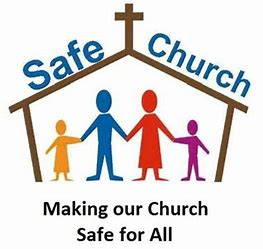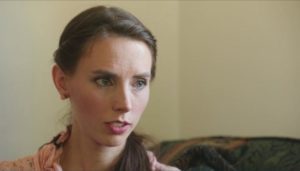 One of the most important things that I learned when I was a student of the Bible was an understanding of the nature of prophecy. The classical prophets, those who form a large section of our Old Testament, were never in the business of acting as soothsayers and telling people what was going to happen in the distant future. There may have been a few individuals, as referred to in the book of Deuteronomy 13, who were thought to behave in this way. It is also a profound misunderstanding of the Book of Daniel to place him alongside the main canonical prophets. The Hebrew compilers of the Jewish Canon never made this error. The main canonical prophets like Jeremiah, Isaiah and Ezekiel were concerned to be talking about and interpreting the present. Above all, they had something to say about what they believed God had to say about this present and what was going to happen in the immediate future. In short, the prophets were the proclaimers of God’s will and judgement on the current behaviour of the nations. Most of the time these were facing the consequences of disobedience and failure. Even the chosen people were guilty, and there were to be disastrous consequences- death, destruction and other terrifying outcomes.
One of the most important things that I learned when I was a student of the Bible was an understanding of the nature of prophecy. The classical prophets, those who form a large section of our Old Testament, were never in the business of acting as soothsayers and telling people what was going to happen in the distant future. There may have been a few individuals, as referred to in the book of Deuteronomy 13, who were thought to behave in this way. It is also a profound misunderstanding of the Book of Daniel to place him alongside the main canonical prophets. The Hebrew compilers of the Jewish Canon never made this error. The main canonical prophets like Jeremiah, Isaiah and Ezekiel were concerned to be talking about and interpreting the present. Above all, they had something to say about what they believed God had to say about this present and what was going to happen in the immediate future. In short, the prophets were the proclaimers of God’s will and judgement on the current behaviour of the nations. Most of the time these were facing the consequences of disobedience and failure. Even the chosen people were guilty, and there were to be disastrous consequences- death, destruction and other terrifying outcomes.
The second major idea in helping me to understand the prophetic tradition was to see the way that the prophets stood outside the institutional expressions of the Israelite religious/political system. From the time of David to the Exile, the Court and the Temple were key in maintaining the stability of the Israelite identity. Together these institutions would have claimed to protect and preserve all that was important about the worship and teaching of Yahweh. The prophets, by contrast, stood outside this system. Their vocation was to be outsiders, to challenge and defy the comfortable institutions of kingship and Temple worship. A conflict between the priest/ritual and the prophet is most clearly seen in the book of Amos. Amos sizes up the way that ritual worship and wealth coupled with immorality have corrupted the social and religious integrity of the northern kingdom of Israel. The whole book is gloomy and sets God’s judgement firmly in opposition to a failing establishment. The prophet again and again expresses the loathing of God for sin as well as the empty worship and sacrifices of Israel. ‘When you present your sacrifices and offerings I will not accept them… I cannot endure the music of your lutes’.
Amos sees that a terrible fate is coming to Israel. He declares: ‘I saw the Lord standing by the altar and he said: strike the capitals so that the whole porch is shaken; I will smash them all into pieces’. These prophecies of Amos were not given without those he was attacking making a response. Amos records one particular showdown when a member of the priestly establishment, Amaziah, confronts him. Amaziah tells him in no uncertain terms to go away back to Judah. In response Amos tells him that the forthcoming disaster will strike Amaziah and his whole family. More importantly Amos denies that he is ‘a prophet or the son of a prophet’. No doubt he is comparing himself with the official prophets attached to the official sanctuaries. Amos, the outsider, is free to speak and prophesy as God has told him to do.
The classical prophets in the Old Testament can be understood better when we become aware of these tensions between the vested interests of Temple and Court and the more charismatic independent traditions of prophecy. The institution reacts to this challenge just as we would expect; it tells the prophets to go away and not disturb the status quo or the vested interests of those in power.
If we try to compare the situation of the classical OT prophets and today, we might ask whether any parallels could exist. The Church of today does have strong features of being a reactionary self-protecting institution and many times it has been accused of behaving defensively to preserve itself. Among the ‘prophetic’ attacks that the Church has had to face is the challenge of its wealth. Has the Church held its wealth in the best possible way? Could it be accused of creating wealth, prestige and status rather than other imperatives such as serving the poor? There is no right or wrong answer to these questions, but we would be right to suggest that those who challenge the church in this area are engaged in an activity we could rightly describe as prophetic. Prophets are there to challenge and make institutions constantly appraise their deepest values.
Prophets like Amos are also found among those who speak to the Church from the perspective of survivors of abuse, sexual or otherwise. If these survivors are pushed away as being uncomfortable or embarrassing, we could well be reminded of the stand-to between Amaziah and Amos. ‘Never prophesy at Bethel, for this is the king’s sanctuary, a royal palace’ were the words of Amaziah. The same kind of uncomfortable prophesying might well be heard now in the Church. Any Church, much like ancient Israel, would probably want to preserve the status quo and all the power involved in the institution. Survivors are saying to the vested interests like the prophets of old. ‘We want openness, transparency and an end to secrecy. We also need resources to help us to recover from our pain. Through our understanding of God’s will, we believe that such things are just, loving and equitable. The needs of the wounded, the afflicted and destitute are a first call on the Church which believes in the compassion and love of God for all’. These could be considered to be words of prophecy to the Church just as the words of Amos were to the religious authorities of his day. In Amos’ words may ‘justice roll on like a river and righteousness like an ever-flowing stream’.








